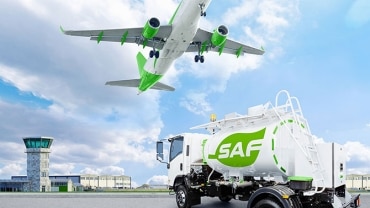
We expect 2023 to be characterised by a more disciplined approach to M&A in the industrial manufacturing and automotive (IM&A) sectors as dealmakers contend with the challenging macroeconomic environment. Headwinds such as slowing GDP growth, the Russia–Ukraine conflict, the energy crisis, and rising interest rates and inflation led to a reset in M&A activity in 2022 back to pre-pandemic levels.
Despite market turbulence, companies in the IM&A sectors with strong balance sheets will likely continue to be active in M&A. Corporate players are focused on acquisitions to gain access to new technology and service capabilities or to create scale efficiencies through consolidation. A continued focus on building greater resilience into their supply chains is also keeping corporate M&A activity at a stable level. While private equity (PE) and special purpose acquisition companies (SPACs) will continue to transact, they face a more challenging environment.
Many CEOs are reviewing their portfolios and considering carve-outs and divestitures as they shift focus from growth to profitability and capital allocation. These transactions will raise new capital for investment in more profitable areas. Corporates with lower cash balances are likely to consider more defensive M&A strategies. They may seek opportunities to combine businesses to reach scale and to limit margin erosion from volatile commodity prices and increasing energy costs, especially in Europe. Ongoing supply chain disruptions will likely foster vertical integrations to secure access to key suppliers and raw materials, contributing to an accelerating trend of businesses converging into different sectors.
Uncertainty about market conditions is making it difficult for companies to put forth a near-term budget and agree on reasonable valuations for their businesses. In the short term, we expect the valuation gap between buyers and sellers to prevent some deals from getting done, although we expect the sentiment to evolve from a seller’s to a buyer’s market. Motivated dealmakers will find ways to close the valuation gap between buyers’ and sellers’ price expectations through due diligence and scenario planning.
From a sector perspective, we remain cautiously optimistic about dealmaking activities in aerospace and defence (A&D), mainly due to a recovery in tourism and stability in defence budgets. Transactions in the automotive market will continue to be dominated by the transition to electric vehicles. In the engineering and construction (E&C) sector, increased appetite for infrastructure investments will likely have a positive impact on deals. A healthy level of transactions is expected in the business services sector due to the sector’s somewhat anti-cyclical nature, combined with growing investor interest in technology-led solutions. Finally, the industrial manufacturing sector will likely exhibit stable deals activity, with small to medium-size transactions driven by strategic focus areas and national consolidation in the machinery and equipment niches.

“IM&A dealmakers’ focus is shifting to strategic areas for investment in capabilities and services. This, coupled with carve-outs and divestitures resulting from portfolio reviews, will drive continued deal activity throughout 2023, working through the current macroeconomic headwinds.”
M&A hot spots
We expect the following will likely be hot spots for M&A activity over the next six to 12 months:
- Innovative technologies: Corporates are investing in innovation and new technologies for a sustainable competitive advantage in the medium and long term. We expect tech-driven M&A transactions to influence the IM&A industry in the near term, mainly in relation to batteries and charging technologies for electric vehicles, cloud-related technologies, artificial intelligence and robotic technologies.
- Data analytics: Data analysis to make strategic decisions—and deliver on them—will be critical for industrial players. Dealmakers are assessing how they will manage the high price of input costs such as energy and raw materials along with the right strategy to protect their companies from margin erosion and order volatility. Corporate players are facing challenges passing through higher costs and resetting their pricing strategies.
- People: Companies will need to recruit new talent to increase their strategic and business capabilities related to digital and environmental, social and governance (ESG) transformations. Considering the shortage of skilled labour, the competition for talent will continue, likely driving more ‘acqui-hire’ M&A transactions. These transactions come with their own sets of successes and cultural challenges.
- Cybersecurity: Cybersecurity is becoming increasingly important for all IM&A sectors in connection with digital and cloud transformation. The A&D sector in particular will be significantly affected by the technology evolution and challenges of the cyber world. We expect that companies seeking to acquire capabilities in this field will drive M&A activity.
M&A resets to pre-pandemic levels in 2022
Industrial manufacturing and automotive deal volumes and values, 2018-2022
M&A volumes and values in IM&A decreased between 2021 and 2022 by 11% and 30%, respectively, compared with the 17% and 37% respective declines in the broader M&A market. In spite of the challenging dealmaking environment, M&A activity in 2022 reset to pre-pandemic levels in the A&D, automotive, business services, E&C and industrial manufacturing sectors. The trends were not uniform across countries or regions and indicate investors’ broader shift to find opportunities and growth in other markets. For example, between 2021 and 2022, M&A volumes in India increased by 33%, but in China deal volumes decreased by 35%, mainly due to macroeconomic factors and pandemic-related challenges. While deal activity in Europe, the Middle East and Africa (EMEA) declined by 4% over the same period, activity increased in France, Italy, Spain and Portugal. The Americas saw a 10% decrease in deals activity, while deal values declined by 54%, largely due to a sharp drop in megadeals—transactions with a value in excess of US$5bn—primarily in the business services sector.
While PE’s share of IM&A dealmaking remained consistent between 2021 and 2022, in the second half of the year there was a divergence by type of buyer: corporates with strong balance sheets continued to transact, whereas PE activity decreased because tight debt markets have made financing more expensive and challenging.
“Portfolio optimisation and divestitures will drive new dealmaking activities in the IM&A sector at a worldwide level in the first six months of 2023. The second half of the year could see a normalisation of market conditions, with the reopening of the IPO market and more tech-driven deals.”
Key themes driving M&A activity in 2023
- Portfolio optimisation
- Digital transformation
- Sector convergence
- Environmental, social and governance (ESG)
Portfolio optimisation
We expect CEOs will conduct strategic reviews of their businesses to reassess their current portfolio in terms of market and business priorities to decide which business units to continue to invest in and which to divest. Low-growth or recessionary periods usually make these strategic choices a business imperative—acting early and decisively is the key to maximising the benefits. We expect to see a growing trend of divesting assets to free up capital for new investments focused on sustainability and to accelerate the digital transformation. We may also see an uptick in distressed M&A if current economic headwinds extend further into 2023.
Digital transformation
Digitalisation will certainly be a key influence on the strategic rationale of future M&A transactions across all the IM&A sectors. Companies will use M&A to buy new tech competencies and transform their businesses. Cloud transformation in particular will be a key factor for many well-established corporate players in the IM&A world, especially in the business services, A&D and other industrial manufacturing subsectors, which tend to be characterised by high research and development costs and disruptive new business models.
Sector convergence
We expect more M&A will involve businesses converging into different sectors or subsectors. Automotive companies will continue to seek out early-stage technology companies on their path towards electrification; A&D, E&C, and industrial manufacturing companies will also continue to invest in technology, talent and other capabilities to support their own innovation journeys. We also expect that more companies will buy into other sectors—for example, acquiring mining assets to gain access to critical minerals used in battery production—to strengthen supply chains by directly securing access to raw materials or key components.
Environmental, social and governance (ESG)
ESG is increasingly on CEOs’ agendas, not simply as a ‘check the box’ due diligence task but rather as a long-term lever for value creation. In addition to meeting the standard criteria for an investment thesis, target companies that demonstrate they also bring other attributes that support broader ESG goals may help change the narrative with key stakeholders. This is expected to have a positive impact on valuation and may help push certain important deals over the line.
M&A outlook for industrial manufacturing and automotive companies
The M&A environment is challenging for many IM&A companies with macroeconomic factors clearly creating uncertainty around growth prospects and profitability. Companies that can use this time to review their portfolios, pursue M&A to acquire new capabilities and perhaps venture into new sectors will be well positioned to deliver sustained outcomes that will support long-term value creation.

About the data
We have based our commentary on M&A trends on data provided by industry-recognised sources. Specifically, values and volumes referenced in this publication are based on officially announced transactions, excluding rumoured and withdrawn transactions, as provided by Refinitiv as of 31 December 2022 and accessed on 2 January 2023. This has been supplemented by additional information from Dealogic and our independent research, and includes data derived from data provided under licence by Dealogic. Dealogic retains and reserves all rights in such licenced data. Certain adjustments have been made to the source information to align with PwC’s industry mapping.
Explore our local M&A Trends in Industrial Manufacturing and Automotive Sectors from the following countries or regions:
Contact us


Global Industrial Manufacturing & Automotive Deals Leader, Partner, PwC United States

Contact us







































